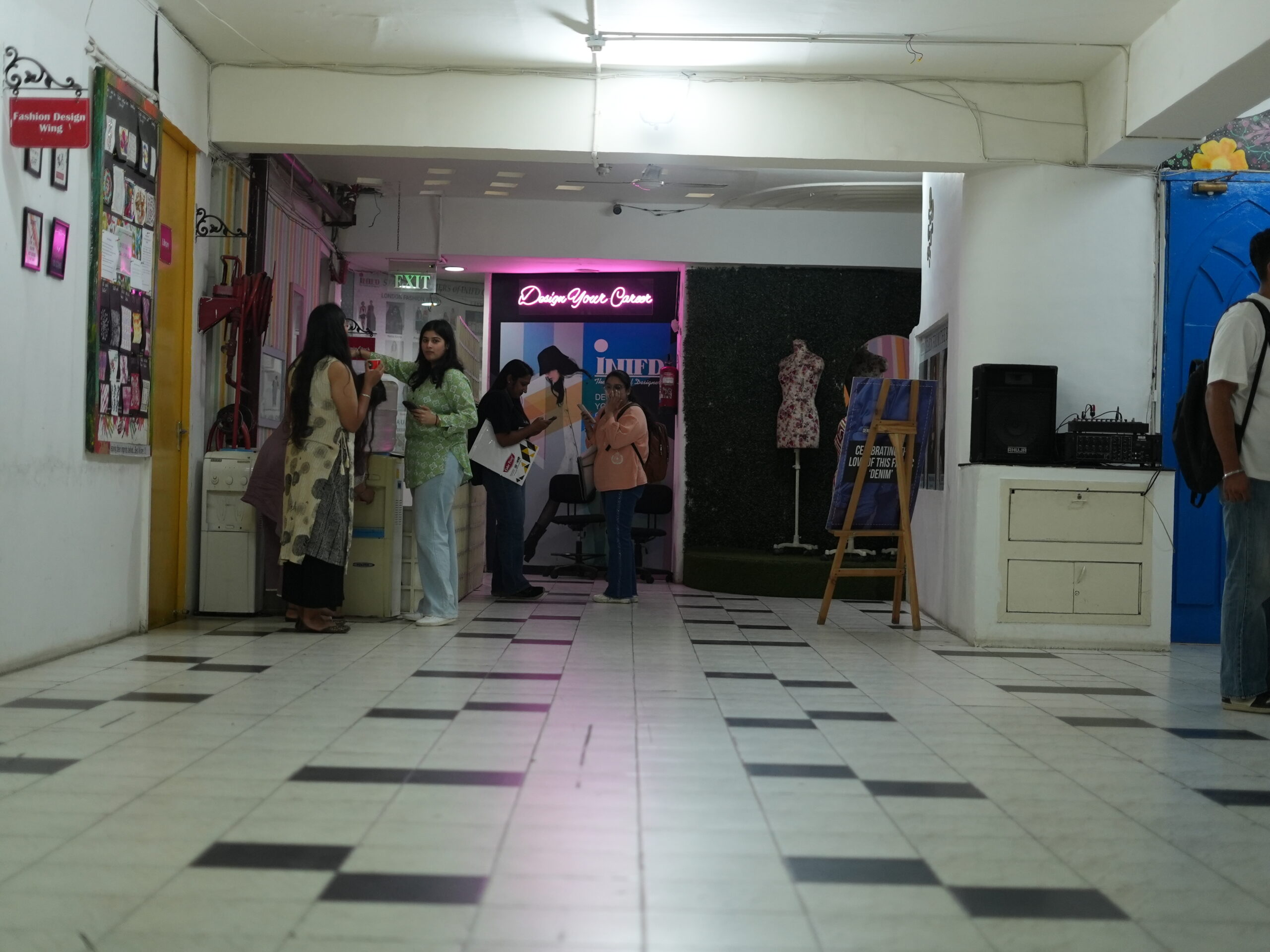
There is a huge change happening in design education in India. As the creative industries grow, from fashion and interiors to communication and lifestyle design, young female designers are expected to know and do more than ever. Employers and clients don’t want designers who only know theory anymore. They want professionals who can think for themselves, solve real problems, and bring new ideas based on what they know from experience. Because of this change, beyond the classroom learning is now not only helpful, but also necessary.
You can’t just teach design through lectures, notes, or definitions in a textbook anymore. Students’ creativity grows when they look at, touch, and interact with the world around them. The best lessons come from going beyond the rules, whether it’s about how fabric behaves, how people think, how to design lighting, how to be more environmentally friendly, or how to plan a space.
This is why schools like INIFD are changing how they teach by making hands-on learning a big part of the design process.
Our Director Anita Kaushik often says that innovation begins when students are encouraged to experiment fearlessly.
The Power of Learning Outside the Classroom in Design
Design requires movement, curiosity, and exposure by its very nature. A classroom can teach students about ideas, but only real-life situations can show them how those ideas work, change, and react. When students go outside, they see cultural patterns, textures, colors, behaviors, and spatial relationships, things that no book can really show them.
Before they can design for people, designers need to know how people think. The best way to see how people interact, study their lifestyles, and learn about their needs is to be in real life. This exposure helps students develop sharper intuition, stronger ideas, and designs that are more useful. Working outside of school also teaches you how to be flexible, which is an important skill in any creative job.
Learning by Experiencing:
The Heart of Modern Design Education
Designers who learn by doing are confident, willing to try new things, and good with technology. Students learn by solving problems in real time when they drape fabrics, sew clothes, build 3D models, make moodboards, test lighting, or design spaces. They learn through trial and error, understand their limits, and find new ways to do things.
This kind of learning makes a designer who can think about more than just how things look. They can also think about how they work and how they will sell. It also helps students improve their own style, which is something that will become their trademark in the business world. Most importantly, their creative confidence grows a lot when they see their ideas come to life.
What Learning Outside of School Looks Like in Design School
Studios, craft clusters, exhibitions, marketplaces, and even backstage at fashion shows are all part of modern design education in India. Students often learn more from watching how a store arranges its displays, how a craftsperson dyes fabric, or how the lighting in a room changes the mood than from any one lecture.
Students learn about India’s craft heritage by going to artisan communities in the field. They learn about deadlines, working together, and being technically precise in the studio. Going to runway shows or interior design shows gives them a taste of global trends and how professionals present themselves. Every experience adds depth to their design thinking and helps them build a strong portfolio that is ready for the job market.

How INIFD Helps Students Learn Outside of Class
The way of learning at INIFD goes way beyond what you would find in a regular school. The school puts a lot of emphasis on hands-on learning by providing fully stocked design labs, fashion studios, interior workshops, and training in specialized software. Students work closely with mentors who help them turn their ideas into professionally done projects.
INIFD regularly sets up industry visits, expert masterclasses, market studies, material explorations, and live projects. Students often work together on fashion shows, exhibitions of interior design, brand projects, and sessions where they make models. The curriculum is set up so that every student learns the whole process, from coming up with an idea to putting it into action.
Students are always in touch with the real world of design, whether they are working with artisans, going to design festivals, or making clothes for INIFD’s own fashion shows. This exposure helps them develop a strong creative identity and get ready to enter the industry with confidence after they graduate.
Why design students need to be exposed to the real world
The design business moves quickly, is very competitive, and relies heavily on new ideas. Students learn how to think critically, meet client needs, and change their ideas to fit real-world situations when they are exposed to real life. It helps them learn about the business side of design, like budgets, materials, deadlines, sustainability, market demand, and how people behave as consumers.
Exposure also helps you develop soft skills like communication, teamwork, problem-solving, and leadership, which are all things that employers look for when hiring young designers. When students work with professionals, they learn how to present their ideas, deal with criticism, and make their ideas better so they meet industry standards. Their biggest strength is that they are emotionally and creatively mature.
INIFD’s Point of View: Getting India’s Next Generation of Designers Ready
INIFD thinks that the future of design belongs to people who are creative, curious, and aware of their work. The school stresses:
- Knowing what’s going on in the world while staying true to Indian culture
- Encouraging people to express themselves and be creative
- Getting better at technical and digital skills like CAD, 3D modeling, and visualization
- Encouraging ethical thinking and sustainability
- Giving students a taste of the business world through real-world projects and partnerships
This mix of learning theory, doing things, and exploring new things helps students reach their full creative potential.
Takeaway
Design education in India is changing, and students who are willing to learn outside of school have a big advantage. Real-life experiences make people more creative, help them understand how things work, and get them ready for the problems they will face in the design industry. INIFD still supports this method with a mix of hands-on training, industry interaction, and immersive experiences. The message for future designers is clear: Get out there, see things, try things, and learn. Real design happens in the real world, and the most powerful growth comes from beyond the classroom learning.
FAQs
Because design is a hands-on field where real-world experiences, industry exposure and creative problem-solving shape stronger, job-ready designers.
It bridges theory with application, builds confidence, improves technical skill, and helps students understand how design works in real industry scenarios.
Workshops, industry visits, internships, live projects, backstage fashion show experience, exhibitions, and collaborations with real brands.
INIFD offers backstage fashion week opportunities, masterclasses, industry tie-ups, internships, hands-on workshops, and expert-led sessions to give students real exposure.
It prepares students for professional challenges, enhances creativity, and helps them build a strong portfolio that stands out in the competitive design industry.
